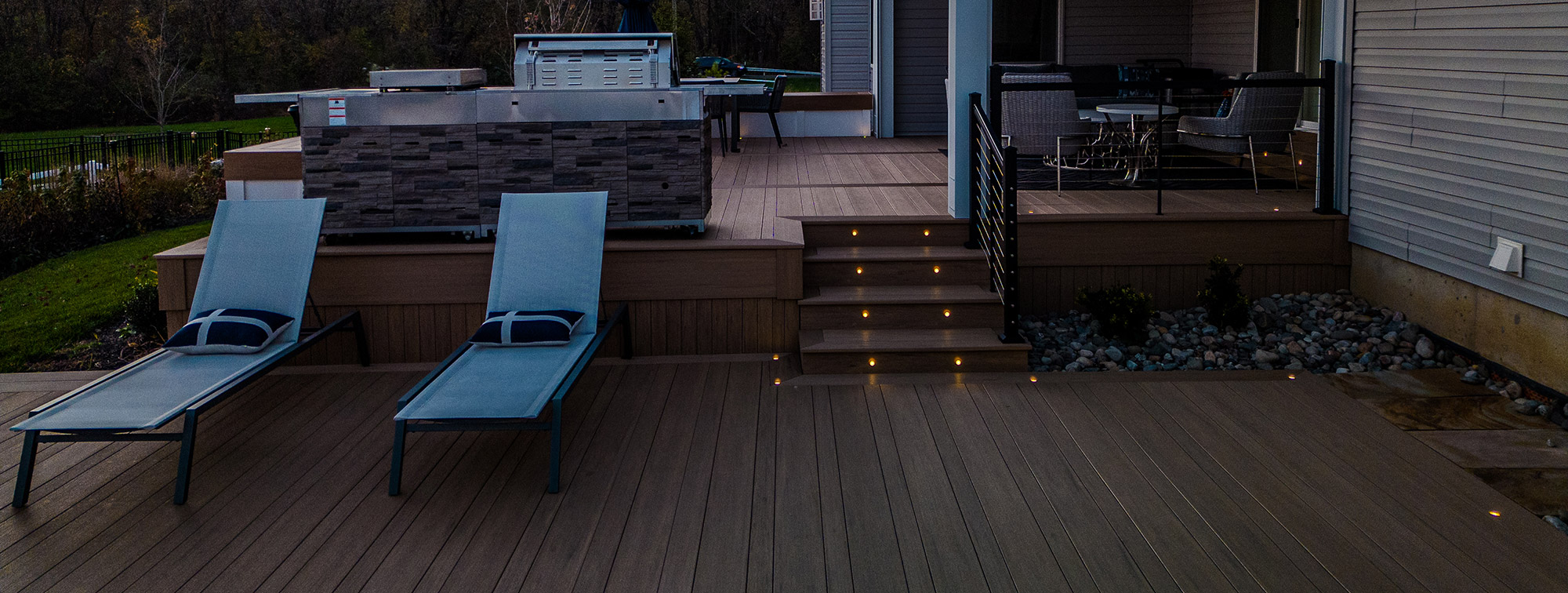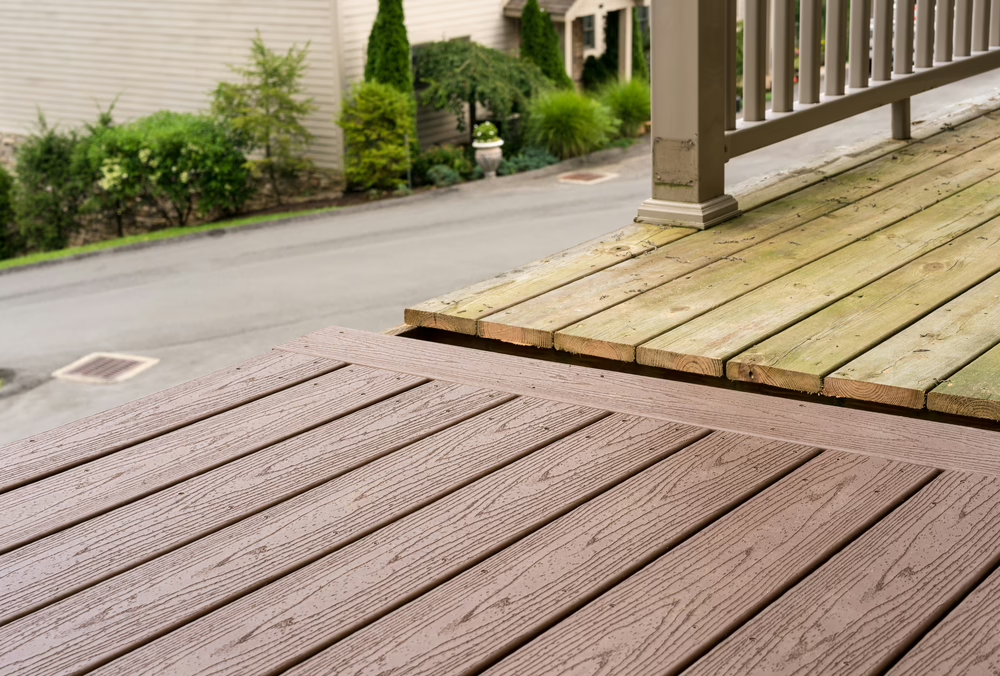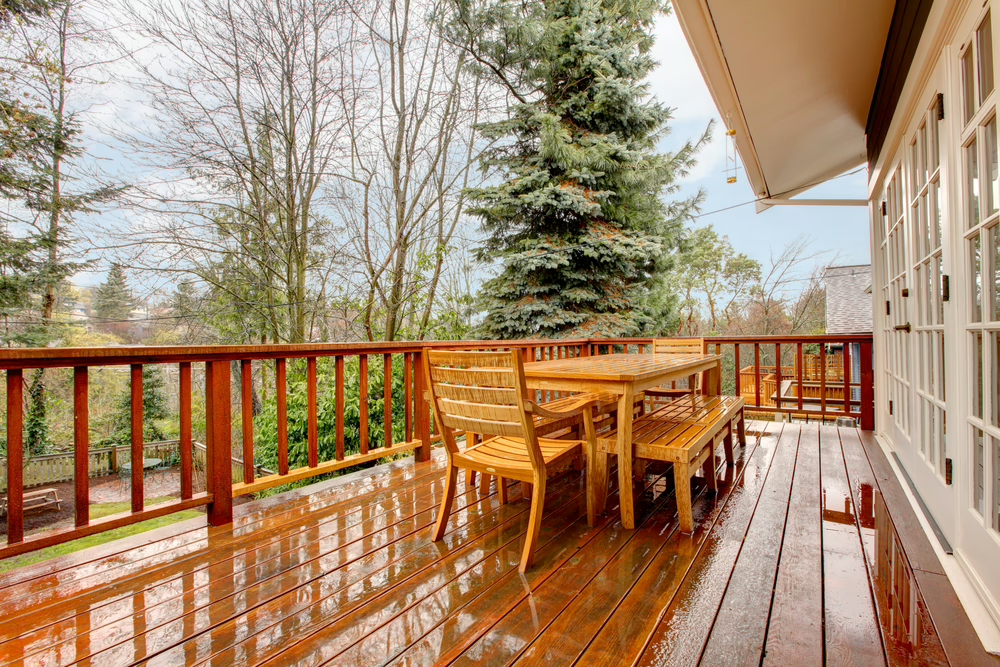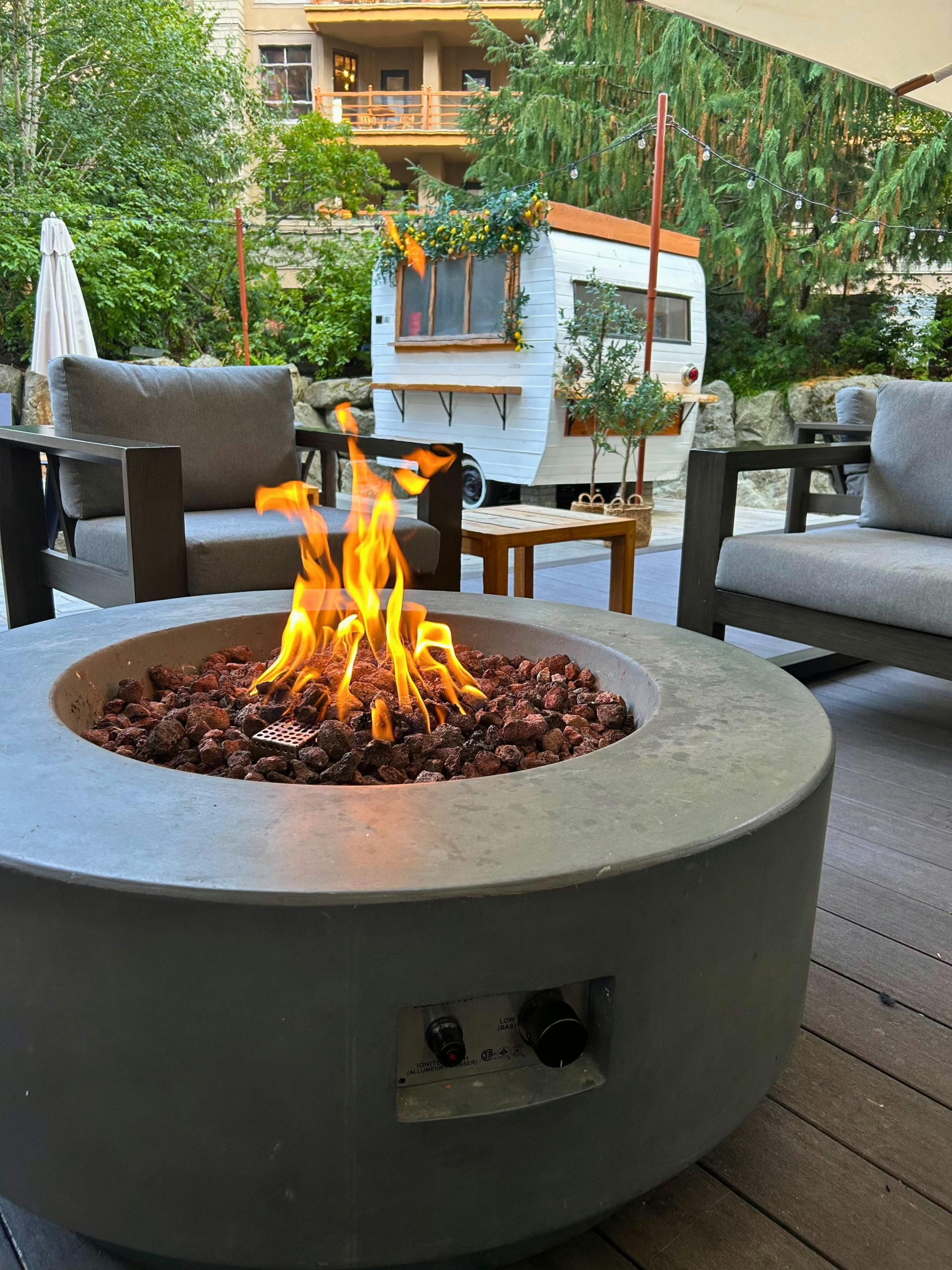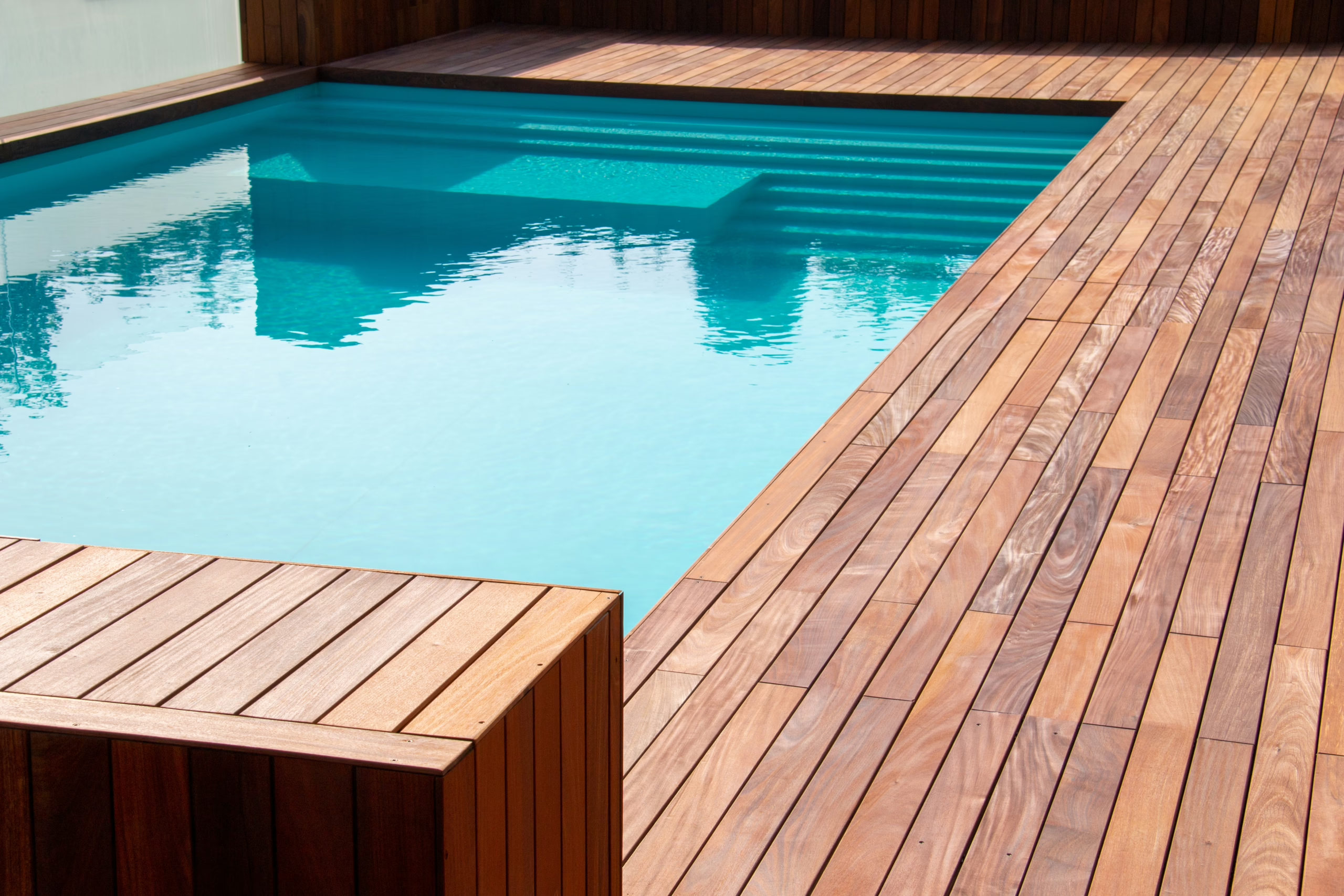Selecting between wood and composite materials is one of the most important decisions homeowners must make when designing a new deck. Each option has its own advantages, disadvantages, and potential styles. Making the best choice for your house and way of life will be made easier with the help of this guide, which will cover all the information you require regarding appearance, price, longevity, and long-term performance.
Why the Decking Material Matters
Your deck’s material choice has an impact beyond appearances. It affects your home’s long-term worth, the amount of upkeep needed, and even how cozy your outdoor living area is to walk on. Finding the ideal balance between cost, longevity, and style is key when deciding between wood and composite decking.
Understanding Wood Decking
Types of Wood Decking
Wood has been the go-to material for generations. Popular choices include:
- Pressure-treated lumber is widely accessible, reasonably priced, and treated to fend off insects and rot.
- Redwood and cedar are valued for their warm, rich tones and are naturally resistant to decay.
- Exotic hardwoods such as teak, mahogany, and ipe provide elegant beauty and exceptional durability.
Aesthetic Appeal
Wood provides a natural appearance that is hard to duplicate. Wood decks have a timeless appeal because of their organic feel, color variations, and grain patterns. The way wood ages and acquires a patina is something that many homeowners adore.
Durability and Lifespan
Depending on the species and level of maintenance, wood decks can last anywhere from 10 to 30 years. However, problems with wood include warping, cracking, and splintering. As well as damage and rot from insects.
Maintenance Requirements
Owning a wood deck requires a consistent maintenance routine:
- Cleaning: Annual washing to remove dirt, mildew, and debris.
- Sealing or Staining: Every 2–3 years to preserve color and protect against moisture.
- Repairs: Occasional replacement of warped boards, loose nails, or damaged sections.
Understanding Composite Decking
Wood fibers, recycled plastics, and binding agents are combined to create composite decking. It is designed to withstand many of the issues that natural lumber encounters, in contrast to wood. Although early composites were known to look artificial, more recent models have greatly improved. Modern composites offer a variety of finishes and can replicate the color, grain, and texture of real wood. For homeowners exploring composite decking in Horsham, modern materials provide a long-lasting, low-maintenance option that delivers both beauty and strength.
Durability and Lifespan
The durability of composite decking is well-known. Many brands have warranties of at least 25 years. Benefits consist of:
- Resistance to fading, discoloration, and scratches
- No chance of splintering
- Improved resistance to insects, rot, and moisture
Maintenance Requirements
Composite decking requires minimal upkeep compared to wood:
- Cleaning: Simple soap-and-water wash a few times a year.
- No Sealing or Staining: The color is baked into the material and does not need reapplication.
- Fewer Repairs: Boards are less likely to warp or crack.
Comparing Aesthetics: Natural Beauty vs Modern Versatility
Wood: Timeless and Authentic
Wood continues to be the best option for homeowners seeking a natural appearance. Each board is distinct, adding warmth and character to your deck. You can alter the shade to match your house or landscape with different stains and finishes.
Composite: Consistent and Customizable
For people who like a clean, consistent look, composite decking offers consistency throughout your entire deck. Many manufacturers offer colors that resemble natural wood tones, as well as modern shades like gray, black, or multi-tonal blends.
Which Is Right for You?
- If you appreciate authenticity and the changing appearance of natural grain, go with wood.
- If you want a consistent finish and a range of color options, go with composite.
Comparing Costs: Initial Investment vs Long-Term Savings
- Pressure-Treated Lumber: $15–$25 per square foot installed
- Cedar/Redwood: $25–$35 per square foot installed
- Hardwoods (Ipe, Teak, etc.): $30–$60 per square foot installed
Although wood is frequently less expensive up front, maintenance expenses could grow over time.
- Composite Decking: $30–$60 per square foot installed
Although composite is usually more costly to install, homeowners frequently save money on ongoing upkeep.
Long-Term Value
Over the course of ten to fifteen years, wood requires constant sealing, staining, and repairs, which can cost thousands of dollars. Although composite is more expensive up front, it is frequently less expensive over the deck’s lifetime.
Comparing Durability: How Each Handles Weather and Wear
Without routine sealing, wood decks are prone to fading in direct sunlight and may warp or crack when exposed to moisture fluctuations. Additionally, they are susceptible to termites and other wood-boring insects, which, if ignored, can harm them over time. Conversely, composite decks withstand moisture, humidity, and coastal conditions well. They provide a longer-lasting option with less upkeep because they are resistant to sun damage and color fading and because pests find them unappealing. Composite decking is frequently the more dependable option for homeowners who reside in areas with high levels of humidity, precipitation, or snowfall.
Environmental Considerations
Wood
- A renewable resource, especially if it comes from a sustainable source.
- Biodegradable at the end of its life cycle.
- Chemical treatments are necessary for options that are pressure-treated.
Composite
- Built from fibers from reclaimed wood and recycled plastics.
- Although not biodegradable, manufacturers frequently recycle their products.
- Lessens the need for virgin timber.
Comfort and Safety
When selecting decking materials, heat retention is a crucial consideration. It can be uncomfortable to walk barefoot on traditional composite decking during the hottest summer months because it tends to get hotter than wood when exposed to direct sunlight. To make them more comfortable in warm climates, many more recent composite brands now provide cooling technologies that lessen heat absorption. As wood decks age, their surface texture may splinter, posing a risk to children’s and pets’ safety. In contrast, composite decking is made with a smoother, splinter-free finish that, over time, provides a surface that is safer and more pleasurable. Another major issue for homeowners is slip resistance.
Although wet conditions can make both wood and composite slick, many composite products are designed with textured or embossed finishes to increase traction. They are therefore a sensible choice for locations with pools, humid climates, or areas that get a lot of rain. When taken as a whole, these elements demonstrate how composite decking has improved to help solve common safety and comfort concerns, making it a compelling option for contemporary outdoor living areas.
Customization and Design Possibilities
Because of its great degree of adaptability, wood decking is a great choice for homeowners who like personalization. Almost any design can be created by cutting and shaping it, enabling imaginative arrangements, integrated seating, or ornamental patterns. Wood also has the advantage of being able to withstand a large range of paints and stains, which allows you to update or completely alter the appearance of your deck over time. This makes it particularly appealing to homeowners who like a traditional, natural look or who like to update their outdoor spaces every few years.
On the other hand, composite decking offers a distinct set of advantages that tend to be more convenient and contemporary in style. Plenty of composite options come with concealed fastening systems that eliminate visible screws or nails to produce a smooth, polished look. Additionally, they are available in larger board sizes and distinctive finishes that are not possible with natural wood, like wood-grain patterns or variegated colors. Furthermore, composite decking looks great with steel or aluminum railings, giving homeowners a sleek, modern look that combines strength and design versatility. Composite decking offers features that improve the overall appearance and usability of an outdoor living area, making it the ideal choice for people who want to reduce maintenance while increasing curb appeal.
Common Myths About Wood and Composite Decking
- Myth 1: Composite requires no upkeep. Composite still needs to be cleaned to avoid the accumulation of dirt and mildew, even though it requires less upkeep.
- Myth 2: Wood is always less expensive. Even though wood might be less expensive initially, the cost of continuous treatments may offset the higher initial cost of composite.
- Myth 3: The composite appears to be fake. Many people are unable to distinguish between wood grain and the high-quality composites of today.
Choosing Based on Lifestyle
Pressure-treated wood is frequently the most economical choice for homeowners on a tight budget. It provides durability and a traditional wood look with the least amount of initial outlay. To prolong its life and maintain its fresh appearance, it usually needs routine maintenance like staining or sealing. Composite decking is a desirable substitute for individuals who favor a low-maintenance lifestyle. It doesn’t need to be treated every year like wood does, which saves you time and effort on weekend projects while keeping it looking neat and polished.
Homeowners who value design might favor expensive composite materials or exotic woods. While exotic species like mahogany or ipe offer rich, natural beauty, high-quality composites offer eye-catching finishes, vivid color variations, and contemporary design elements that elevate a deck to the status of an outdoor space focal point. Lastly, composite frequently performs better than wood in regions with harsh climates. Compared to the majority of natural wood products, it is more resistant to warping, cracking, and fading when exposed to high levels of moisture, continuous sunlight, and seasonal temperature fluctuations.
A homeowner can select the decking material that best suits their lifestyle and long-term objectives for their outdoor living area by considering factors like cost, maintenance requirements, design preferences, and local climate conditions. If you’re considering deck installation in New Hope, working with experienced professionals helps you choose the right balance between natural wood and composite options for your home.
Final Thoughts: Wood vs Composite Decking
When it comes to decking materials, there is no one-size-fits-all solution. For homeowners who appreciate its warmth and are prepared to put in the necessary maintenance, wood is still a stunning and genuine choice. Conversely, composite provides unparalleled ease of use and durability for individuals seeking a visually appealing, low-maintenance deck that will endure for many years.
You can make an informed choice that complements your lifestyle and improves your outdoor living area by comparing the durability, costs, and aesthetics. Transform your outdoor space with Deck Expert, contact us today to start building the deck you’ve always wanted!
